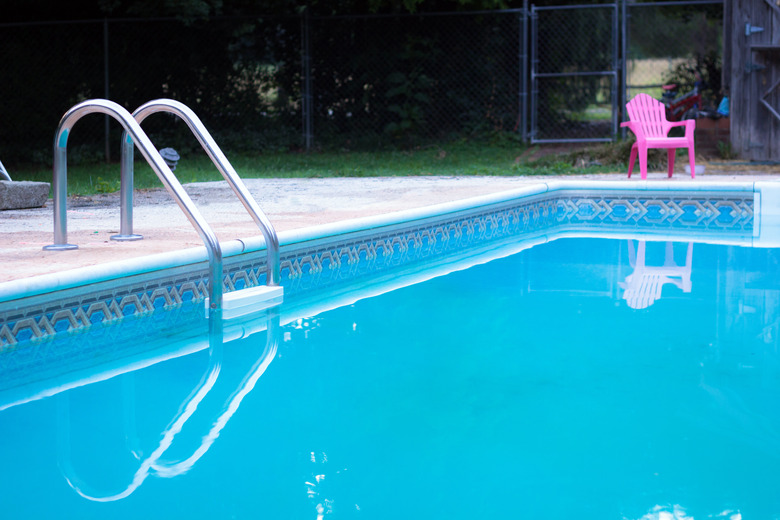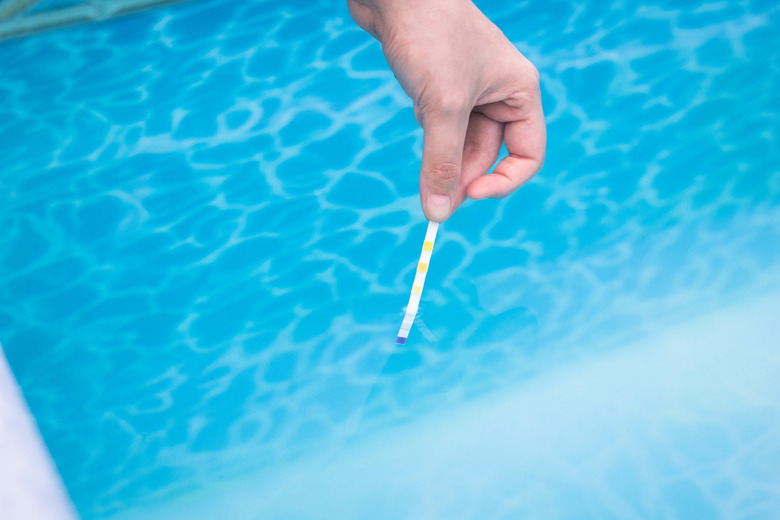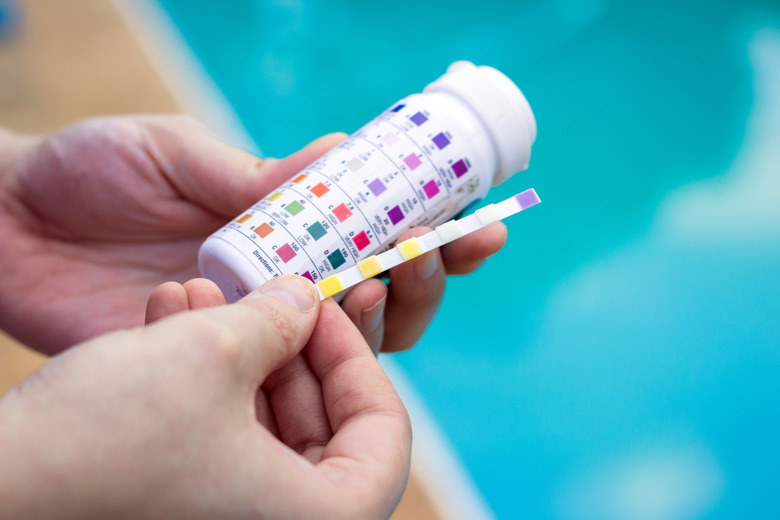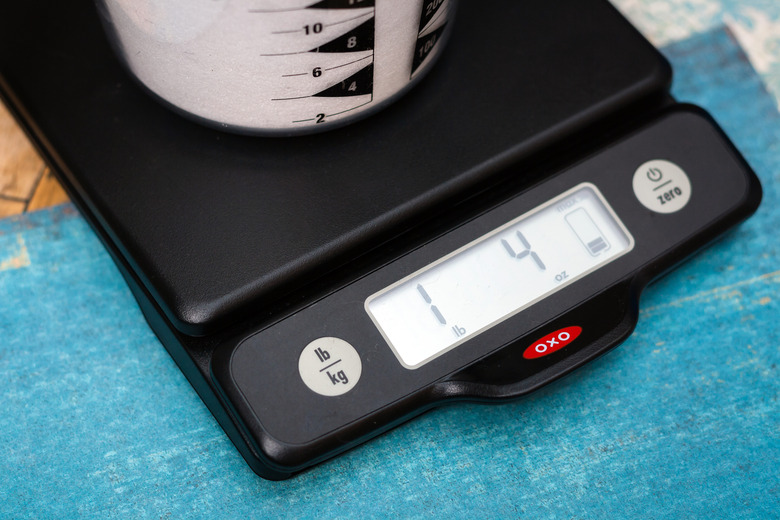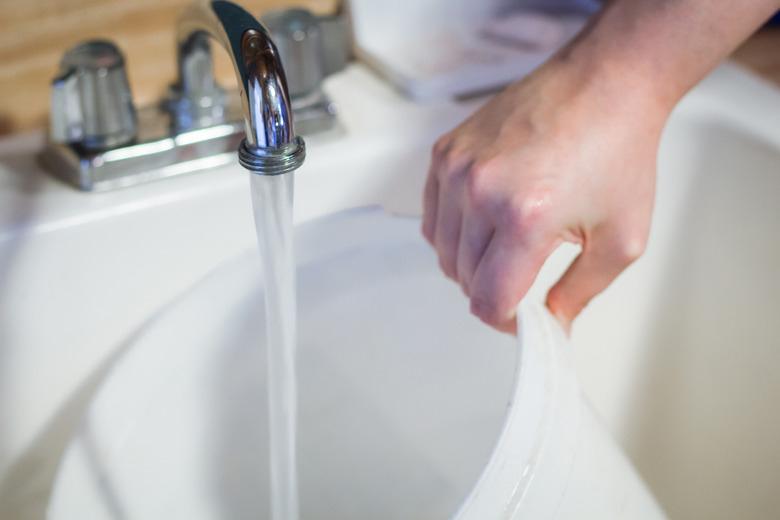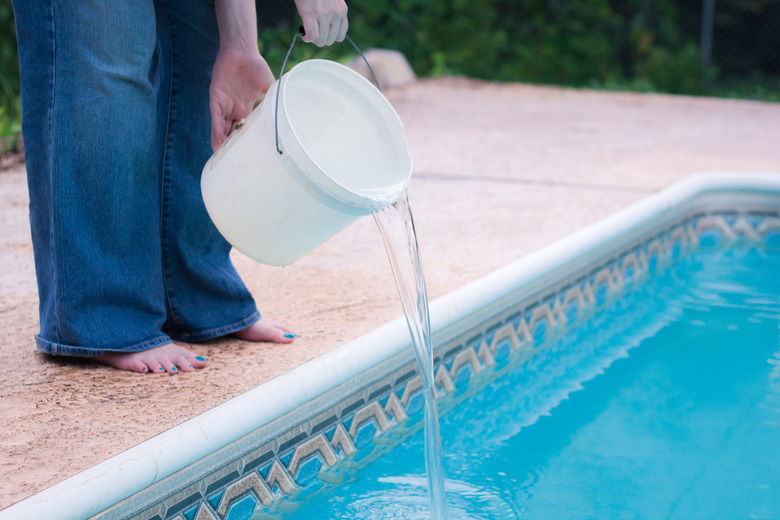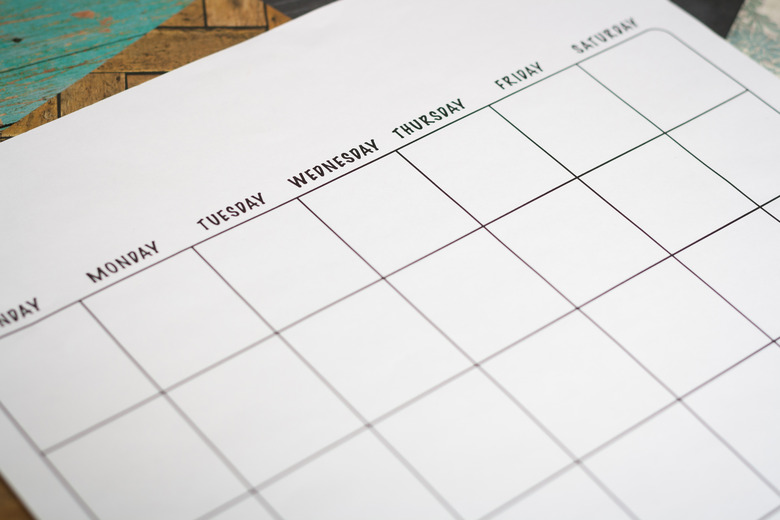How To Raise Calcium Hardness In A Swimming Pool
Along with pH and total alkalinity, the third important measurement of water balance in a swimming pool is the amount of dissolved calcium. This measurement is usually called the "hardness" of the water — high calcium levels indicate hard water; low levels are "soft" water. Although there are other dissolved minerals in water, such as magnesium, it is calcium you should be most concerned about. A dissolved calcium level that is too high (hard water) can be damaging to a pool, but a low calcium level (soft water) can also cause problems.
Soft water (low calcium levels) can cause plaster or concrete pool walls to lose their calcium to the pool water, and can cause vinyl pools to lose their elasticity. This can be a very expensive problem, so pool owners need to address low calcium quickly.
High levels of calcium, on the other hand, can destroy a filtration system by leaving deposits of scale in the pipes and parts. In certain parts of the U.S., such as the Southwest, hard water is an ongoing problem for pool owners. Simple evaporation of water, which is accelerated in very hot, sunny climates, will gradually concentrate the amount of dissolved sodium in the water, making it harder.
The ideal reading for calcium hardness in pool water is about 200 to 400 parts per million. Fortunately, calcium hardness changes rather slowly, so a once-a-month testing and adjustment should be all you need.
Things Needed
-
Calcium hardness test kit
-
Calcium chloride
-
Bucket
1. Dip the Test Strip
Test the water for calcium hardness using a test strip from the calcium hardness test kit. Dip the strip in the water on the deep end of the pool, as far down in the water as you can reach.
2. Read the Results
Remove the strip from the water. Compare the color on the strip to the color chart in the kit. This tells you the hardness level in the water. If the level is below 200 ppm, you need to raise the level. If the level is above 400, skip to step 7.
3. Measure Calcium Chloride
Measure out enough calcium chloride to raise the hardness level. Use 1 1/4 pounds of product per every 10,000 gallons of water if you need to raise the level by 10 ppm. Use 2 1/2 pounds (per 10,000 gallons) to raise the level by 20 ppm, or use 6 1/4 pounds of product (per 10,000 gallons) to raise the hardness level by 50 ppm.
4. Mix the Solution
Fill a bucket with warm water. Add the measured amount of powdered calcium chloride to the water in gradual amounts — never add water to the compound. Allow the product to dissolve.
5. Pour the Solution
Start pouring the mixture into the deep end of the pool. Slowly walk around the deep end, pouring in the mixture until it is all gone. Turn on the pool filter, and let it run for at least six hours.
6. Recheck for Hardness
Retest the calcium level the next day. Assuming the level is correct, check the chlorine and alkalinity levels, and adjust them if needed. Return the pool filter to its normal operating schedule.
7. If You Need to Reduce Calcium Hardness
If the calcium level is above 400 ppm, your water is excessively hard, and you'll need to take steps to reduce it. The best way to do this is simply to drain some of the water out of your pool and add fresh water. This effectively dilutes the concentration of calcium in the water, thereby lowering its concentration.
If you are well over the 400 ppm maximum calcium amount, you may need to drain and refill as much as 1/4 of the water in your pool to effectively reduce the calcium hardness back to the middle of the acceptable range.
